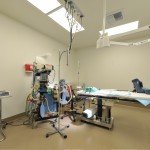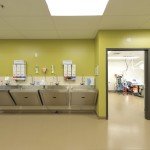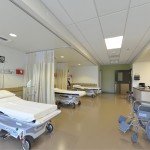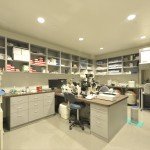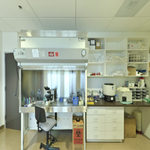About
Success
Treatment
Financial
Resources
Blog
Contact
Site Tools

Is Bed Rest Required After an Embryo Transfer?

Reproductive medicine and technology have greatly developed in the past few decades. In the initial days of fertility science and innovation, patients who had an embryo transfer had to stay on complete bed rest for at least two weeks after the procedure.
That meant not standing up for any reason – not even to use the toilet. However, the old concept has changed a whole lot today.
While it’s important to rest after the procedure, strict bed rest is not necessary or even advised anymore. Nevertheless, there are still some activities and precautions you should take following an embryo transfer to improve your chances of success.
What Is an Embryo Transfer?
An embryo transfer is the final stage in the IVF process. During in vitro fertilization, the woman takes fertility medications to stimulate her ovaries to produce and release many healthy, viable eggs. These eggs are collected and fertilized with a donor’s or the male partner’s sperm in an IVF laboratory. The resulting embryos are then transferred into the woman’s womb.
Nowadays, IVF is the most sought-after fertility treatment used to help couples or individuals who are struggling to have children. It is usually recommended for women with
- Endometriosis
- PCOS
- Damaged uterine tubes
- Fibroids
- Ovulation disorders
- Genetic disorders etc.
Thanks to the progress in assisted reproductive technology, it is now possible to perform frozen embryo transfer. As the name suggests, a frozen embryo from a past IVF cycle is thawed and transferred back into the intended mother’s uterus. This means that you don’t need another cycle of hormone stimulation and egg retrieval to have children in the future.
Frozen embryo transfer can be inducted while you are on a natural cycle, or utilizing hormone preparation, or through ovulation induction.
Embryo Transfers and Bed Rest: What the Research Say
Our knowledge regarding the importance of staying in bed after embryo transfer has evolved in recent years. It’s now evident that strict restrictions were not needed – and several studies have proven that to be true.
A 1997 study found that 24-hour bed rest after an embryo transfer did not yield a better result than a 20-min bed rest did.
In another study conducted in 2005, the researchers discovered that there was no significant difference in pregnancy rates between patients who stood instantly after an embryo transfer and those who stayed in bed for one hour after the procedure.
A scientific review published in 2011 evaluated various studies concerning bed rest and embryo transfer. According to the authors, there’s no adequate evidence to prove that patients should be on bed rest following an embryo transfer procedure.
Newer studies have also shown that extended bed rest can rather result in negative pregnancy outcomes, particularly for women who underwent a donor-assisted IVF cycle.
Researchers found that bed rest and inactivity, together with increased estrogen levels, caused insulin resistance and increased blood clot formation in the body. These blood clots may impact the growth and development of the baby in the womb since it impedes the flow of blood to important areas.
On the other hand, mild activity aids blood flow, reduces inflammation, and relieves stress. All these factors are linked to improved fetal development and better health for the mother-to-be.
Long story short – taking bed rest after an embryo transfer is not absolutely necessary.
Activities You Need to Avoid Shortly After an Embryo Transfer
- Avoid strenuous activities : You should be able to go back to your normal activities after this procedure, including light-to-moderate exercises, which can be advantageous to both the mother and her child. However, it is recommended that you stay away from any strenuous activities or workouts that can cause discomfort, i.e., jumping or heavy lifting activities. Moreover, you want to keep away from sex immediately after embryo transfer, as it may impact the implantation of the embryo in the uterus.
- Avoid Excessive heat : Although a normal shower is allowed, a lot of experts also suggest that expectant mothers avoid excessive heat, such as hot baths or tubs, at this time, since sustaining elevated heat can raise internal body temperature, which may prevent the embryo from implanting in the womb.
- Don’t think before talking to your Doctor : If you are having mild constipation, bloating, spotting, and breast tenderness, there’s usually no need to be worried. However, if the symptoms are very severe or worrying, it is important to speak with your physician or medical team as soon as possible.
Remember, that the fertility drugs you were prescribed may cause ovarian hyperstimulation syndrome (OHSS). We advise contacting your fertility clinic or doctor if you are experiencing:
- Abdominal bloating
- Abdominal pain
- Vomiting
- Nausea
- Diarrhea
Conclusion
Sure, it is mandatory that you follow the instructions dished out by your medical team. They have a better understanding of the procedure and can provide valuable advice for your situation.
Bear in mind that it is not any fault of yours if the embryo does not implant. According to various studies, average woman requires approximately 2.7 IVF cycles utilizing her eggs before a successful embryo implantation. Sometimes, it takes time and several tries to achieve pregnancy.
At Coastal Fertility, our most experienced fertility experts carry out the entire IVF embryo transfer procedure.
If you are looking for more information about embryo transfer procedures or other infertility treatments, set up a consultation with us. We encourage explore our website where you can find more helpful information and chat with us.
Related Post
-
What is Azoospermia – Types, Causes, Symptoms, and Treatments
-
15 Things Doctors Want Women in Their 30s to Know About Their Fertility
-
Ovarian Hyperstimulation Syndrome (OHSS) – Causes, Risks, and Treatments
-
This IVF Pregnancy Success Video Is Going Viral On TikTok, And It’s The Most Adorable Announcement
-
End your week with these happy and heartwarming stories and videos
-
Fertility clinic shares IVF pregnancy success with parents-to-be in adorable video
Halloween 2019
Each year, Coastal Fertility Medical Center’s staff hosts a fun get together for our former patients and their families. View more photos from our 28th annual Miracle Babies Halloween event!Popular Searches
- Orange County Fertility Clinic
- Irvine, California Fertility Center
- Coastal Fertility Medical Center
- Free Fertility Seminar, Irvine CA
- In Vitro Fertilization and ICSI
- Best Orange County Infertility Doctor
- Southern California Fertility Specialist
- PGD, PGS Orange County
- Egg Donation and Surrogacy
Address
Coastal Fertility Medical Center15500 Sand Canyon Avenue
Suite 100
Irvine, CA 92618
©2024 | Sitemap | HIPAA/Privacy | Disclaimer and Privacy Policy
News from our Top Doctors

Our fertility clinic focuses on helping you build your family regardless of your sexual orientation or the gender you choose to identify with. We are even taking further steps to make LGTB people feel more welcome at our fertility clinic. Each of our patient-facing staff goes through LGTB training to let family-building clinicians provide necessary support and make you feel highly welcome.

Coastal Fertility Medical Center offers one of the most advanced fertility treatments and is completely transparent regarding the costs of procedures and any other expenses that you may have to pay before commencing your treatment. This differentiates us from some fertility clinics that reduce prices before the signing of the contract but charge you extra later on. We make sure our patients are well aware of any possible extra pricing that may occur over the course of their treatment.

The infertility industry is currently segmented, with each service or treatment being handled by a different provider. Our all-inclusive model simplifies an otherwise complex and difficult process. We are here to revolutionize the infertility industry by offering a one-stop-service model to assist our patients through infertility challenges while reducing physical, emotional, and financial risks.

Our globally respected team of specialists are helping improve IVF technologies to enter into a generation of better outcomes for infertility. Although you’ll have a doctor guiding you, you are also going to benefit from the experience and insights of other doctors during case review collaboration meetings, which take place every week. So, you won’t just rely on the expertise of a specialist but benefit from the knowledge of many reputed fertility experts.

Our team specializes in difficult cases and help patients who may have been considered “hopeless” at other fertility clinics. Thanks to our personalized solutions, expertise, and internal collaboration, weare able to maximize pregnancy success rates that are well above the industry average, even in difficult infertility cases.

We know that every situation is different and that everyone requires different treatments. Unlike facilities that take “a one-size-fits-all” approach for all cases, our fertility specialists use more than 40 customized protocols to raise the chances of success. The customized approach even extends to our fertility laboratory. Our on-site lab director and his highly-experienced team nurture every embryo and egg to increase the odds of success of each cycle.

Coastal Fertility Medical Center offers one of the most advanced fertility treatments and is completely transparent regarding the costs of procedures and any other expenses that you may have to pay before commencing your treatment. This differentiates us from some fertility clinics that reduce prices before the signing of the contract but charge you extra later on. We make sure our patients are well aware of any possible extra pricing that may occur over the course of their treatment.
Thanks for Joining!
We will be sending new updates soon.
You’re all set!
Your new patient forms have been submitted and received. We look forward to seeing you at your appointment.
Send us a message, we’ll be happy to answer any questions!
Please complete the form so we can best serve and help you with your journey towards parenthood.
On Demand Seminar Registration
Following the Preimplantation Genetic Screening process, which helps ensure there are normal chromosome numbers and detects possible genetic disorders, the most healthy embryo(s) are selected to be implanted into your or your chosen surrogate’s womb. 2 weeks after the transfer of the embryo, your physician will conduct a final blood test to determine the level of hCG (human chorionic gonadotropin) in your body. Increased hCG levels usually indicate a positive pregnancy test.

For fertilization to take place, the collected egg and sperm are combined in a petri dish and cultured in an embryo incubator. This dish is closely watched to check whether any of the eggs have been fertilized. Once the egg is fertilized, it is referred to as an embryo or a blastocyst on the 5th day of development. Our in-house embryologist carefully nurtures every embryo to the right time, even if it means working outside the standard business operating hours. For instance: If an oocyte is not mature, our laboratory will wait for it to mature and then ICSI it at the right time.
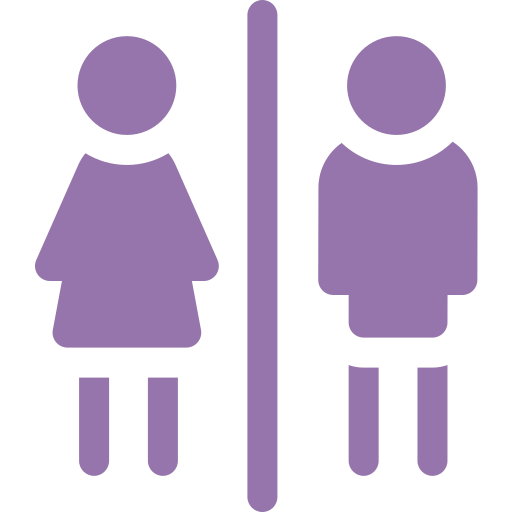
The egg retrieval is a slightly invasive medical procedure that takes about 20 to 30 minutes. You will be given an anesthetic to make you sleep for the duration of the procedure. Using ultrasound technology, your doctor will harvest your eggs transvaginally with a small, hollow needle connected to an ultrasound probe. Once your eggs are collected, your partner’s semen or donor sperm you have pre-selected is used for fertilization. The sperm are washed and prepared, and the top-quality sperm extracted is used to fertilize the eggs.

Your doctor will create a customized medication schedule that contains information about the fertility medications and hormone injections you have to take. Medication and injections are taken to encourage your ovaries to mature a large number of eggs for fertilization. Since women don’t respond to fertility drugs and hormones the same way, personalized protocols are crucial to the IVF cycle success. At Coastal Fertility, we will monitor you closely, letting you understand the changes occurring in your body and keeping track of how your egg follicles are growing.

On-site consultations typicallyinclude a standard fertility evaluation, consisting of a physical examination, complementary follicular ultrasound, and testing to enable your doctor to know your present fertility status and draw up a treatment plan.

This consultation includes a detailed medical evaluation with a doctor. You and your physician will review your health records and have enough time to talk about your goals and get answers to your questions. We recommend that you jot down all your questions before the visit to allow you to make the best use of the time spent with your doctor.

Your Reproductive Endocrinologist will take all factors into consideration and create a comprehensive plan of care, otherwise known as the treatment plan. This plan will include treatment recommendations from the physician and enable your financial coordinator to make a precise quotation once you meet.
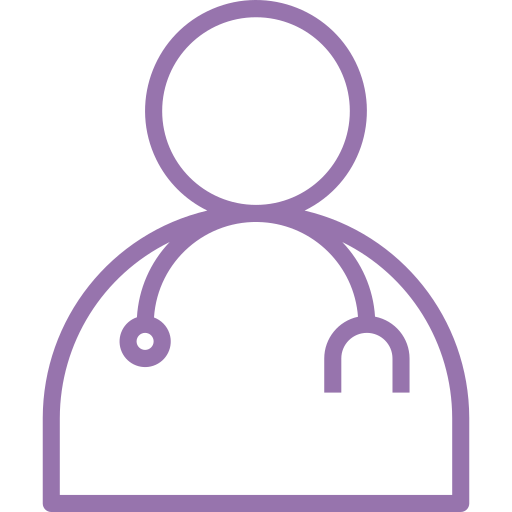
Our globally respected team of specialists are helping improve IVF technologies to enter into a generation of better outcomes for infertility. Although you’ll have a doctor guiding you, you are also going to benefit from the experience and insights of other doctors during case review collaboration meetings, which take place every week. So, you won’t just rely on the expertise of a specialist but benefit from the knowledge of many reputed fertility experts.

The infertility industry is currently segmented, with each service or treatment being handled by a different provider. Our all-inclusive model simplifies an otherwise complex and difficult process. We are here to revolutionize the infertility industry by offering a one-stop-service model to assist our patients through infertility challenges while reducing physical, emotional, and financial risks.

Our fertility clinic focuses on helping you build your family regardless of your sexual orientation or the gender you choose to identify with. We are even taking further steps to make LGTB people feel more welcome at our fertility clinic. Each of our patient-facing staff goes through LGTB training to let family-building clinicians provide necessary support and make you feel highly welcome.

We know that every situation is different and that everyone requires different treatments. Unlike facilities that take “a one-size-fits-all” approach for all cases, our fertility specialists use more than 40 customized protocols to raise the chances of success. The customized approach even extends to our fertility laboratory. Our on-site lab director and his highly-experienced team nurture every embryo and egg to increase the odds of success of each cycle.

Our team specializes in difficult cases and help patients who may have been considered “hopeless” at other fertility clinics. Thanks to our personalized solutions, expertise, and internal collaboration, weare able to maximize pregnancy success rates that are well above the industry average, even in difficult infertility cases.

Upon your arrival, you will check in with a Patient Care Coordinator. We will obtain your insurance information for benefits verification, a copy of your identification and take a picture for your electronic medical chart
Welcome to Coastal Fertility Family
Coastal Fertility is the leading provider of fertility solutions located in Orange County. Join us to get free updates on fertility news, treatments, infertility solutions and more.
Welcome to Coastal Fertility Family
Coastal Fertility is the leading provider of fertility solutions located in Orange County. Join us to get free updates on fertility news, treatments, infertility solutions and more.





